Презентация deck-equipment-and-marlinspike-seamanship3375


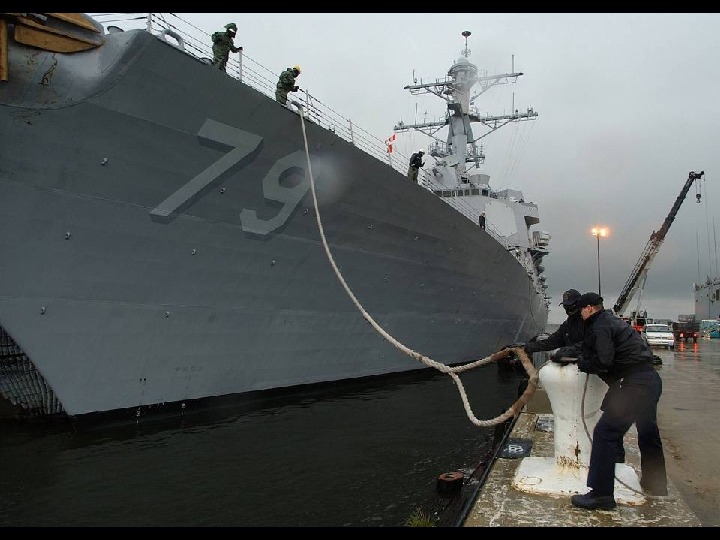


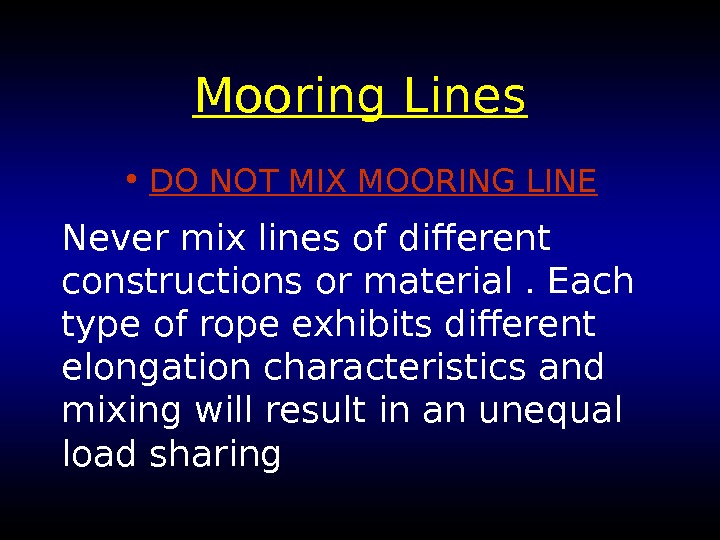





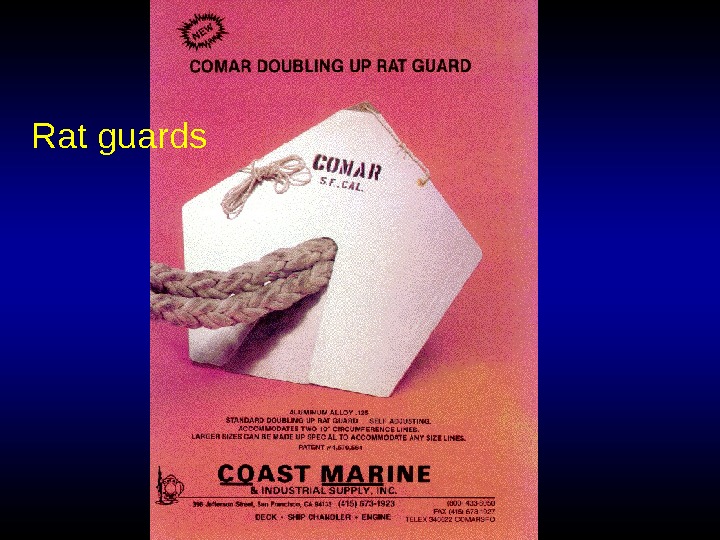


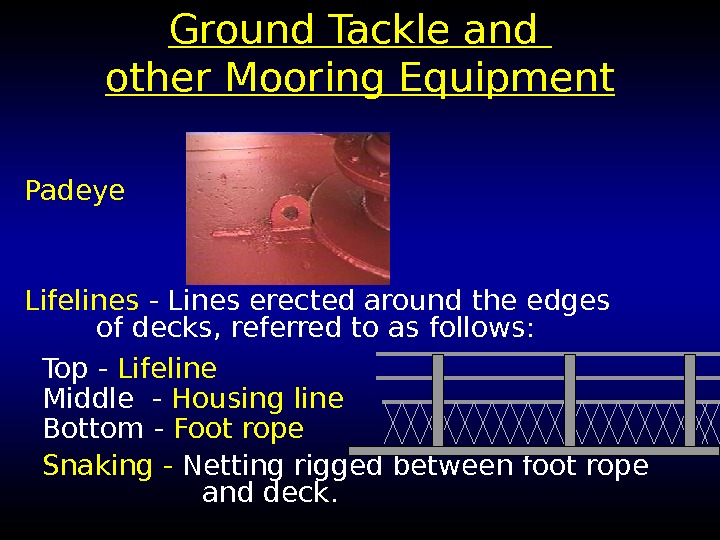




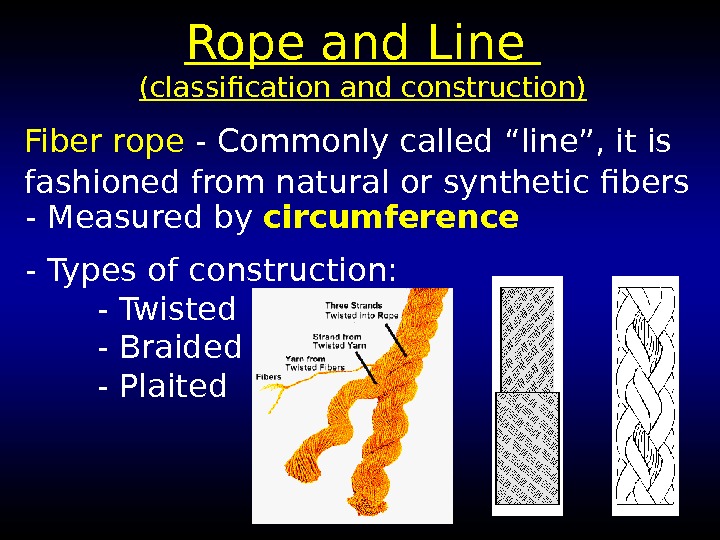



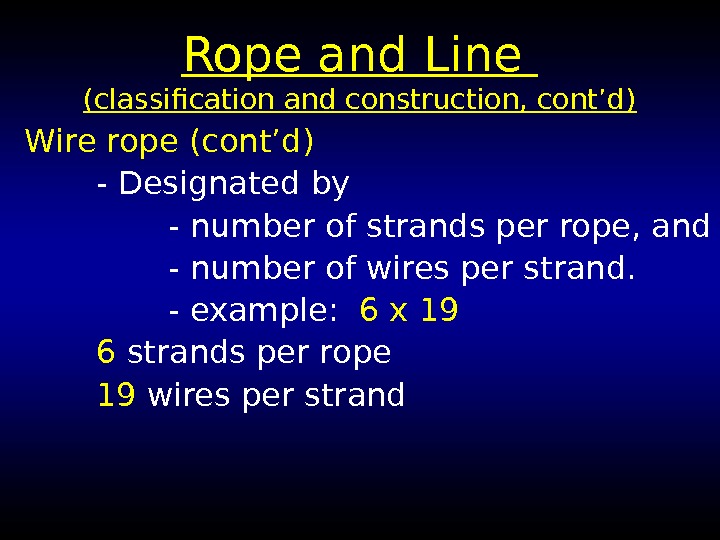











deck-equipment-and-marlinspike-seamanship3375.ppt
- Размер: 1.8 Mегабайта
- Количество слайдов: 34
Описание презентации Презентация deck-equipment-and-marlinspike-seamanship3375 по слайдам
 NS 100 Fundamentals of Naval Science Deck Equipment and Marlinespike Seamanship
NS 100 Fundamentals of Naval Science Deck Equipment and Marlinespike Seamanship

 Mooring Lines Mooring lines are the lines used to secure the ship to a wharf, pier or another ship. Definition of lines : Breast lines — Run at right angles from the ship, control distance of ship from pier Aft spring lines — Tend aft from ship, control forward movement. Forward spring lines — Tend forward from the ship, control aft movement
Mooring Lines Mooring lines are the lines used to secure the ship to a wharf, pier or another ship. Definition of lines : Breast lines — Run at right angles from the ship, control distance of ship from pier Aft spring lines — Tend aft from ship, control forward movement. Forward spring lines — Tend forward from the ship, control aft movement
 Mooring Lines 1 3 4 5 62 Numbering of lines: #1 — Bow line #6 — Stern line #2 — Aft bow spring line #3 — Forward bow spring line #4 — Aft quarter spring line #5 — Forward quarter spring line
Mooring Lines 1 3 4 5 62 Numbering of lines: #1 — Bow line #6 — Stern line #2 — Aft bow spring line #3 — Forward bow spring line #4 — Aft quarter spring line #5 — Forward quarter spring line
 Mooring Lines • DO NOT MIX MOORING LINE Never mix lines of different constructions or material. Each type of rope exhibits different elongation characteristics and mixing will result in an unequal load sharing
Mooring Lines • DO NOT MIX MOORING LINE Never mix lines of different constructions or material. Each type of rope exhibits different elongation characteristics and mixing will result in an unequal load sharing
 CLEAT
CLEAT
 BOLLAR
BOLLAR
 BOLLARD Bitts
BOLLARD Bitts
 Ground Tackle and other Mooring Equipment Chock
Ground Tackle and other Mooring Equipment Chock
 Ground Tackle and other Mooring Equipment Capsta n
Ground Tackle and other Mooring Equipment Capsta n
 Rat guards
Rat guards
 DIP THE EY
DIP THE EY
 Ground Tackle and other Mooring Equipment Chafing gear Fenders
Ground Tackle and other Mooring Equipment Chafing gear Fenders
 Ground Tackle and other Mooring Equipment Padeye Lifelines — Lines erected around the edges of decks, referred to as follows: Top — Lifeline Middle — Housing line Bottom — Foot rope Snaking — Netting rigged between foot rope and deck.
Ground Tackle and other Mooring Equipment Padeye Lifelines — Lines erected around the edges of decks, referred to as follows: Top — Lifeline Middle — Housing line Bottom — Foot rope Snaking — Netting rigged between foot rope and deck.
 Ground Tackle and other Mooring Equipment Boatswain’s chair Leadline
Ground Tackle and other Mooring Equipment Boatswain’s chair Leadline

 Ground Tackle and other Mooring Equipment Pilot’s ladder Accommodation ladder Sea ladder
Ground Tackle and other Mooring Equipment Pilot’s ladder Accommodation ladder Sea ladder
 Marlinespike Seamanship
Marlinespike Seamanship
 Rope and Line (classification and construction) Fiber rope — Commonly called “line”, it is fashioned from natural or synthetic fibers — Measured by circumference — Types of construction: — Twisted — Braided — Plaited
Rope and Line (classification and construction) Fiber rope — Commonly called “line”, it is fashioned from natural or synthetic fibers — Measured by circumference — Types of construction: — Twisted — Braided — Plaited
 Rope and Line (classification and construction, cont’d) Types of fiber rope: Natural: Synthetic: — manila — nylon — Kevlar® — cotton — polyester -hemp — polypropylene
Rope and Line (classification and construction, cont’d) Types of fiber rope: Natural: Synthetic: — manila — nylon — Kevlar® — cotton — polyester -hemp — polypropylene
 Natural vs Synthetic (cont’d) Important differences : • Synthetic fiber lines slip more easily. • Synthetic line has higher breaking strength. • Synthetic line has poor knot-holding characteristics. • Synthetic lines stretch under load.
Natural vs Synthetic (cont’d) Important differences : • Synthetic fiber lines slip more easily. • Synthetic line has higher breaking strength. • Synthetic line has poor knot-holding characteristics. • Synthetic lines stretch under load.
 Rope and Line (classification and construction, cont’d) Wire rope — basic unit of construction is the metal wire. — Measured by diameter. — Construction : individual wires are laid together to form strands , and strands are laid together to form the wire rope.
Rope and Line (classification and construction, cont’d) Wire rope — basic unit of construction is the metal wire. — Measured by diameter. — Construction : individual wires are laid together to form strands , and strands are laid together to form the wire rope.
 Rope and Line (classification and construction, cont’d) Wire rope (cont’d) — Designated by — number of strands per rope, and — number of wires per strand. — example: 6 x 19 6 strands per rope 19 wires per strand
Rope and Line (classification and construction, cont’d) Wire rope (cont’d) — Designated by — number of strands per rope, and — number of wires per strand. — example: 6 x 19 6 strands per rope 19 wires per strand
 Rope and Line (classification and construction, cont’d) Wire Rope (cont’d) — — large number of small wires produces high flexibility but low abrasion resistance. — a small number of large wires would stiffer, but more resistant to abrasion.
Rope and Line (classification and construction, cont’d) Wire Rope (cont’d) — — large number of small wires produces high flexibility but low abrasion resistance. — a small number of large wires would stiffer, but more resistant to abrasion.
 Rope and Line (classification and construction, cont’d) Combination — — measured by diameter — six main strands of fiber and wire rope interwoven, laid around a fiber core. — used as mooring lines for extra strength — fiber rope adds great flexibility and elasticity
Rope and Line (classification and construction, cont’d) Combination — — measured by diameter — six main strands of fiber and wire rope interwoven, laid around a fiber core. — used as mooring lines for extra strength — fiber rope adds great flexibility and elasticity
 Small Stuff Circumference less than 1 3/4 inches. ID’d by the number of yarns (threads) rather than its size. Marline — Two-strand, tarred hemp, used for “serving” a line. (Serving a line means to wrap it with marline to protect it from weather or to make it look neater. Most commonly used on natural fiber lines) Houseline — Three-strand, left laid tarred hemp for light seizing, light rigging, and work exposed to weather.
Small Stuff Circumference less than 1 3/4 inches. ID’d by the number of yarns (threads) rather than its size. Marline — Two-strand, tarred hemp, used for “serving” a line. (Serving a line means to wrap it with marline to protect it from weather or to make it look neater. Most commonly used on natural fiber lines) Houseline — Three-strand, left laid tarred hemp for light seizing, light rigging, and work exposed to weather.
 MONKEY LINES
MONKEY LINES
 Small Stuff (cont’d) Seizing stuff — Very small, used for fancier jobs that marline can accomplish. Ratline stuff — Dark brown and coarse, it is primarily used for snaking Tattletale
Small Stuff (cont’d) Seizing stuff — Very small, used for fancier jobs that marline can accomplish. Ratline stuff — Dark brown and coarse, it is primarily used for snaking Tattletale
 Marlin e spike Seamanship Terms Hawser — Heavy line over five inches in circumference. Used for towing or mooring. Bight — A loop of line or chain. Bitter End — Free end of a length of line, wire chain or cable.
Marlin e spike Seamanship Terms Hawser — Heavy line over five inches in circumference. Used for towing or mooring. Bight — A loop of line or chain. Bitter End — Free end of a length of line, wire chain or cable.
 Marlin e spike Seamanship Terms (cont’d) Fid Coil
Marlin e spike Seamanship Terms (cont’d) Fid Coil
 Marlin e spike Seamanship Terms (cont’d) Flemish Fake down Heaving line
Marlin e spike Seamanship Terms (cont’d) Flemish Fake down Heaving line
 Marlin e spike Seamanship Terms (cont’d) Monkey fist Rat-tailed Stopper — Line designed to take the strain of a working line while shifting the line about bitts or cleats. Mousing
Marlin e spike Seamanship Terms (cont’d) Monkey fist Rat-tailed Stopper — Line designed to take the strain of a working line while shifting the line about bitts or cleats. Mousing
 Marlin e spike Seamanship Terms (cont’d) Shot line — Light nylon line used in a line throwing gun Bolo — Nylon line with a lead weight in canvas or leather, thrown from ship to ship or from a ship to a pier.
Marlin e spike Seamanship Terms (cont’d) Shot line — Light nylon line used in a line throwing gun Bolo — Nylon line with a lead weight in canvas or leather, thrown from ship to ship or from a ship to a pier.


